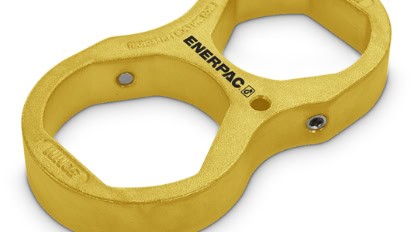What happens inside a hydraulic torque tool and how do they work? In this article, we provide a simple overview of how both low-profile and square-drive hydraulic tools work.
Pumps for hydraulic torque tools must be set to the pressure necessary to ensure that the tool achieves the desired torque. This is something you find on drawing tables that come with tools.

Then, safety tools are placed on the nut on the opposite side of the flange to prevent it from rotating during the tightening process. kNm Hydraulics recommends using either a Safety Nut, Safety Wrench or Back Up spanner for this part of the process. The torque tool can now be placed on the flange nut – making sure that the reaction foot of the tool rests on a reaction point (usually the nut next to the nut you are tightening). This counteracts the force that occurs when using the tool. Those working with the tools must ensure that hands and fingers are away from dangerous pinch points.
Once all this is done, you can turn on the torque pump. When hydraulic oil flows to the torque tool, the piston moves into the puller, causing the hex ring to rotate around the nut. The piston is pulled back, causing the ratchet to return to its original position, and the process is repeated until the required torque is achieved.
How does a square drive torque wrench work?
The working principle of a square model is very similar to that of a low-profile puller. This is also designed with a piston that extends to move a ratchet. The main difference is that instead of a hexagonal ring, a square drive shaft is rotated, and this shaft fits into the required socket for the nut size.
Important
The information provided in this article is only to provide a very basic overview and should not be used as an operating manual. Hydraulic equipment should only be used by trained personnel and in accordance with the manufacturer’s operating instructions.
The video below shows an Enerpac W2000X low-profile hydraulic torque wrench with a W2206X cartridge. In this video, the cassette is removed to show you the tool inside.



